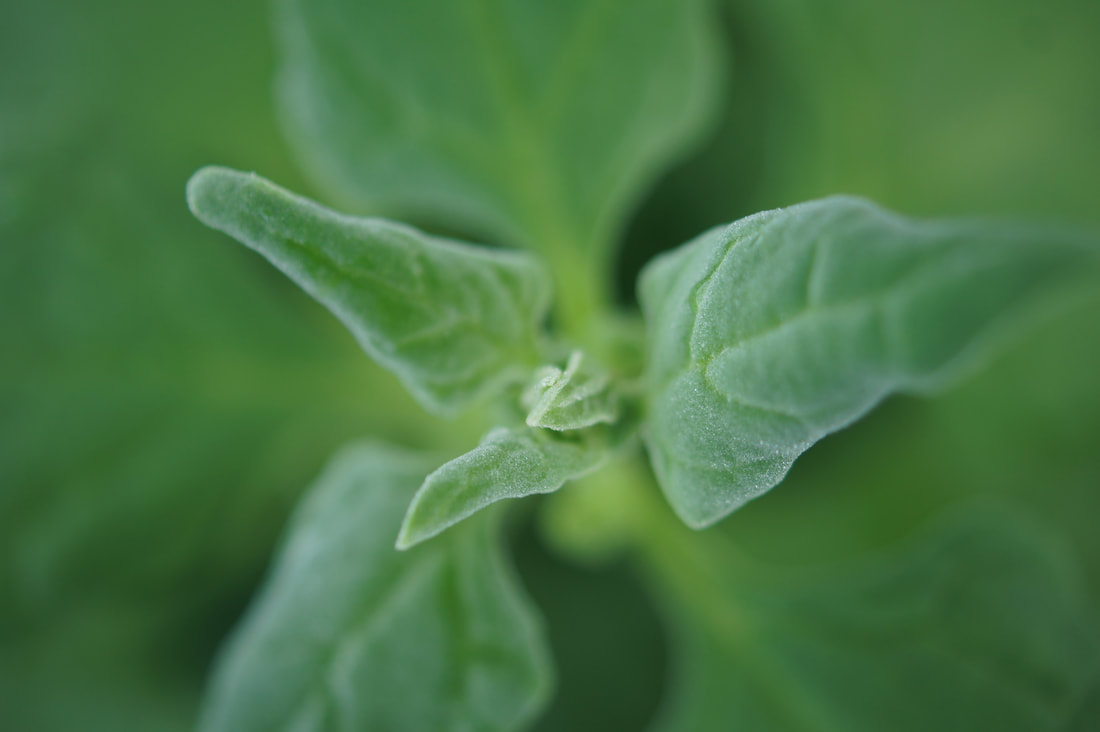Warrigal Greens has to be the best value vegetable plant you can have in your vegetable garden. Warrigal is exceptionally easy to grow and will cover a metre (if allowed) in no time at all, due to its prostrate habit. One plant is all you need to feed your family, and the best part is, the more you pick the leaves the more it grows. The tips and youngest leaves are the best to harvest.
In the wild Warrigal has its home, along Tasmania's beaches and estuaries, sitting higher than the high tide, on a perch at storm tide. But in cultivation, with good well-drained soils and water, it's a different plant, lush, prolific and tasty. As Warrigal is a naturally growing coastal plant it is susceptible to frosts below - 3C and best treated as an annual plant.
The leaves are similar in taste to the introduced spinach or silver beet. Any recipe using these ingredients, can be substituted with Warrigal Greens. Any dish calling for Asian greens, can be substituted with Warrigal Greens. Any time you make pesto, the main ingredient can be substituted with Warrigal Greens. But for me, I love Warrigal Greens sauteed gently in a little butter and garlic, till it just changes colour to a deep green, so it keeps it crunch. Serve with crumbled feta or goat's cheese. Totally yum.
Captain Cook was the first colonial to taste Warrigal Greens, as he searched for fresh vegetables for his crew as a protection against scurvy. Of all the plants tasted by Joseph Banks and Captain Cook on their voyage to Australian shores, Warrigal Greens made the greatest impression. This vegetable, also known as Botany Bay Greens, was so impressive that seed was gathered, and sent to England and America, appearing in seed catalogues in the 1820's. Although Warrigal Greens was highly prized for its crunchy salty flavour, the early settlers didn't know Warrigal leaves were rich in antioxidants, calcium, magnesium, and Vitamin A, K and B6.
Tasty and healthy, Warrigal Greens really is a wonder vegetable.
In the wild Warrigal has its home, along Tasmania's beaches and estuaries, sitting higher than the high tide, on a perch at storm tide. But in cultivation, with good well-drained soils and water, it's a different plant, lush, prolific and tasty. As Warrigal is a naturally growing coastal plant it is susceptible to frosts below - 3C and best treated as an annual plant.
The leaves are similar in taste to the introduced spinach or silver beet. Any recipe using these ingredients, can be substituted with Warrigal Greens. Any dish calling for Asian greens, can be substituted with Warrigal Greens. Any time you make pesto, the main ingredient can be substituted with Warrigal Greens. But for me, I love Warrigal Greens sauteed gently in a little butter and garlic, till it just changes colour to a deep green, so it keeps it crunch. Serve with crumbled feta or goat's cheese. Totally yum.
Captain Cook was the first colonial to taste Warrigal Greens, as he searched for fresh vegetables for his crew as a protection against scurvy. Of all the plants tasted by Joseph Banks and Captain Cook on their voyage to Australian shores, Warrigal Greens made the greatest impression. This vegetable, also known as Botany Bay Greens, was so impressive that seed was gathered, and sent to England and America, appearing in seed catalogues in the 1820's. Although Warrigal Greens was highly prized for its crunchy salty flavour, the early settlers didn't know Warrigal leaves were rich in antioxidants, calcium, magnesium, and Vitamin A, K and B6.
Tasty and healthy, Warrigal Greens really is a wonder vegetable.

 RSS Feed
RSS Feed